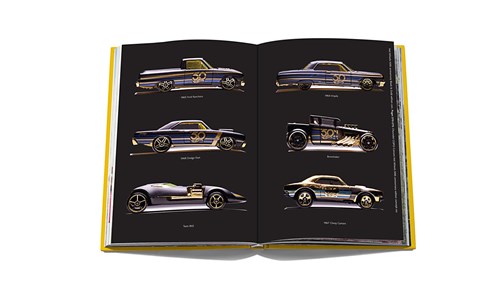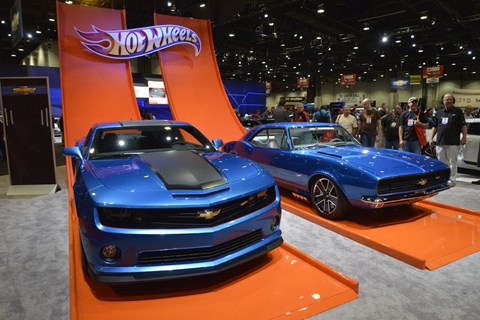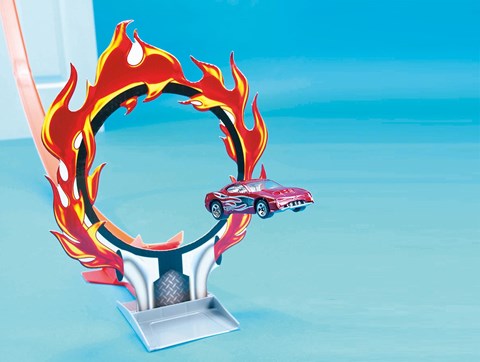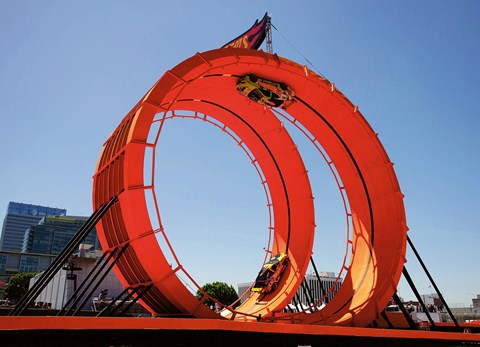► Hot Wheels toys turn 50
► We look at the cult toy cars
► Which is your favourite model?
As Hot Wheels toy cars celebrate their golden anniversary, we take a moment to look back at five decades of cult cars.
A source of inspiration for us? The new Hot Wheels book (below) by Paul Biedrzycki, with a foreword by Mario Andretti, is published by Assouline at £38. It’s beautifully illustrated with some great photography of the little four-wheeled metal marvels.
More of the best car books for petrolheads

1) Hot Wheels: the world’s most popular toy
Mattel already had one global smash with the Barbie doll, released in 1959. They wanted something as popular for boys. The die-cast car market was crammed but Mattel saw an opening for something that was fun to play with, not just good to look at. R&D chief Jack Ryan (ex-aerospace engineer, married to Zsa Zsa Gabor, drove a fire engine) created a tiny roller that brought the models to life.
The other crucial early decision was to not worry about replicating normal cars – the early range was based on real-life custom cars, not mainstream production cars. The magic was born. Several billion cars later, it’s still going strong; they sell 16 every second. That’s Lego levels of awesomeness.

2) It was the most amazing place to work
Mattel is based in California, which was at the time of Hot Wheels’ creation energised by the criss-crossing cultures of hot rodders, drag racers, surfers, beatniks and hippies. It all fed in to the early Hot Wheels range – which today still embraces flamejobs and side-exit exhausts at every opportunity.
The think tank that came up with the early designs was, apparently, like a bunch of overgrown kids messing about with toys, drawing their dream cars all day. Sweet. Literally; British designer Derek Gable, aside from being a Hot Wheels legend, also created chocolate-manufacturing machines for Cadbury’s.

Key early figures included Ira Gilford (ex-Chrysler), Harry Bentley Bradley (ex-GM), Larry Wood (ex-Ford) and a bunch of real-life customisers.
‘It was a rambunctious and sublimely magical atmosphere. Long hair, hot pants, miniskirts, bell bottoms, talent contests, bands playing at lunch hour, and exuberant company gatherings on the weekends,’ according to Biedrzycki’s book.
3) The collectors are nuts
Hot Wheels have always been popular; Kmart’s buyer, after seeing a preview of the original ‘sweet 16’ line-up, ordered 50 million. And they’ve always been cheap to buy – about a dollar in the US, from day one, and the basic ones are currently £1.50 each in the UK.

But some rare and obscure models (such as prototypes that didn’t make it into production) have changed hands for tens of thousands of dollars. The average collector has 1500 cars, says Mattel.
4) The packaging changed the world
Seems obvious now, but the clear plastic bubble packaging – with a built-in loop so it could hang on a shop wall – let you see the brightly painted car properly, making it much more tempting than the closed cardboard box and sombre paintwork favoured by Matchbox. The pun-based or alliterative naming – King ’Kuda, Chief’s Special etc – has also proved to be influential with all manner of toy figures (from Transformers and Power Rangers to Skylanders).
5) They come to life!

Hot Wheels has diversified into digital spin-offs and real life, with Team Hot Wheels running full-size versions on looping tracks at the X Games and elsewhere. Fortunately those tracks were much better than the toy ones, which have been rubbish for 50 years.
More car culture stories by CAR magazine UK